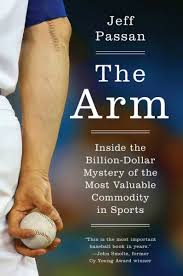 This book gets a poor rating for doing a decent job informing you on the harsh reality of arm injury in this game. I have been through the worst of it in my career. Tore my rotator cuff at 18 and doctors said I would never play again. I had to figure this out on my own. Not only did I play again but I played professional indy ball and topped out at 94mph never falling into another serious injury. The hardest I threw before surgery was 85mph.
This book gets a poor rating for doing a decent job informing you on the harsh reality of arm injury in this game. I have been through the worst of it in my career. Tore my rotator cuff at 18 and doctors said I would never play again. I had to figure this out on my own. Not only did I play again but I played professional indy ball and topped out at 94mph never falling into another serious injury. The hardest I threw before surgery was 85mph.
It fails when it comes to giving you the safest approach to developing the healthy pitcher. The reason it fails is because the author confides in a young pitching coach which you learn, came into the business not as a player or even a pitcher but because he was bored and nothing was challenging him in his 9-5 job. Unfortunately for baseball, this pitching coach has helped popularize extreme weighted ball training which is now fueling the ever growing arm injury rate in this game today. The four minor league pitchers that this book highlights, as this pitching coaches success stories, all went into the current season with arm injury. I receive countless stories on a weekly basis from parents and players who have followed this new trend of extreme weighted ball training and have found themselves injured either during the training or during the new season of play. I do not believe there is another pitching coach in this game who has hurt this many arms in one off-season. My advise is to please educate yourself before blindly following the information given in this book.
The problem is the author failed to do his homework when it came to the instructional pitching business. Not even mentioning one of the founding fathers Dick Mills. He spends a lot of time referencing the mecca of baseball research ASMI but fails to put two and two together. Here is more real science on injury prevention than you will get in this 18 chapter book.
Multivariable logistic regression revealed that averaging more than 80 pitches per game almost quadrupled the chance of surgery (odds ratio = 3.83) and pitching competitively more than 8 months per year increased the odds of surgery by fivefold (odds ratio = 5.05). Most alarming was the finding that a pitcher who regularly pitched with his arm fatigued was 36 times as likely to be in the surgery group (odds ratio = 36.18). http://www.ncbi.nlm.nih.gov/pmc/articles/PMC3435945/
This means if you have a pitcher throwing in the off-season and not rebuilding the body or throwing in any season with fatigued, he is setting himself up for injury, period! Why would this author promote this young pitching coach who consistently puts his pitcher's through extreme throwing programs in the off-season, where it is normal that they complain of dead arm and arm soreness while using all different types of rehab equipment, knowing that this is what ASMI advises against? And we wonder why baseball is accelerating the injury rate today instead of decelerating it. ASMI has found that arm injury comes from Poor Mechanics, Poor Physical Fitness and Overuse (http://www.asmi.org/research.php?page=research§ion=positionStatement). Where in this book is it promoting a form of training that focuses on these three factors? The book is only promoting throwing and more throwing with overloaded and underloaded balls. Studies show that professional pitchers put less torques on their arms based on body weight than youth pitchers so why is this book promoting training that over torques the arm to develop "arm strength?" http://t.motionanalysis.com/pdf/2007_aguinaldo.pdf
"Kibler and Chandler calculated that a 20% decrease in kinetic energy delivered from the hip and trunk to the arm requires a 34% increase in the rotational velocity of the shoulder to impart the same amount of force to the hand." http://www.ncbi.nlm.nih.gov/pmc/articles/PMC3445080/
So why is this book talking about how baseball needs to learn how to train the flexor mass in the forearm to handle more torque and not develop the legs and core to take the loads off the arm? Unfortunately this author is not the best person or most educated person in this field to have written such an important book for this era of young pitchers.
I do believe the intention of the author was to help his 5 year old son and others to NOT find themselves with a UCL injury while pitching in the future. Unfortunately, he more than likely made it worse for his son and the tons of young pitchers in this game today, by only interviewing a coach that showed him fancy equipment and high radar readings from his pitchers in running throws, which is very sad for the actual progress of baseball and the health of todays youth pitchers.
I hate to say it in 2016 but this is another conventional pitching book that only tells the history of the game and fails to give you any solid information to apply it to a more promising future in baseball.
If you want to watch more of this rant on the book The Arm then watch this episode of the @TopVelocity #PitchingTips Show



